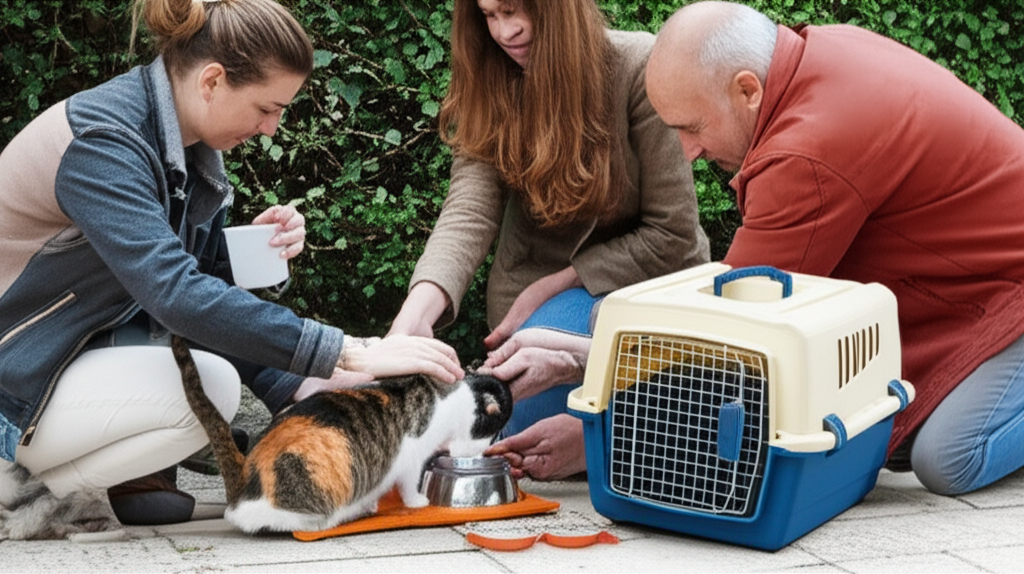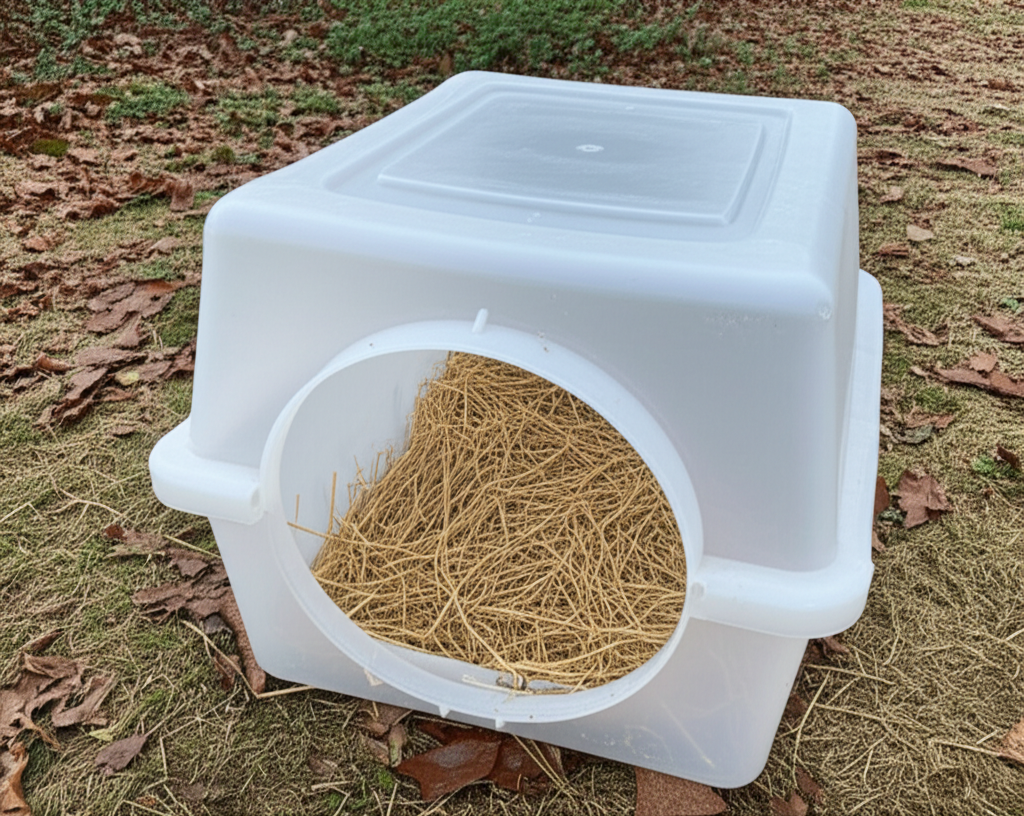
5 Ways to Help Stray Cats in Your Neighborhood
Simple actions that can make a big difference in the lives of homeless cats around you.
In this article:
1. Provide Food and Water
One of the simplest yet most impactful ways to help stray cats is by providing regular food and fresh water. Consistent feeding not only prevents starvation but also helps establish trust and routine, which is essential if the cats eventually need to be trapped for medical care or spaying/neutering.
Tip: Set up feeding stations in quiet, sheltered areas away from busy roads. Feed at the same time each day, and always remove uneaten wet food after 30 minutes to prevent attracting wildlife or insects.
Best practices for feeding stray cats include:
- Use elevated feeding stations to keep food clean and dry
- Provide high-quality dry food as the main diet
- Supplement with wet food, especially in cold weather when cats need extra calories
- Ensure fresh water is always available, using heated bowls in freezing temperatures
- Maintain a consistent feeding schedule to establish routine
Remember that if you start feeding, it's important to commit to continuing. Cats quickly become dependent on food sources, and suddenly stopping can leave them vulnerable, especially if they've adjusted their territory based on your feeding location.
2. Create Simple Shelters
Stray cats need protection from the elements, especially during extreme weather. Simple DIY shelters can provide life-saving refuge during cold winters, hot summers, or rainy seasons.
An effective cat shelter doesn't need to be elaborate or expensive. Even a basic structure with proper insulation can make a significant difference in a cat's survival chances during harsh weather.
The most important features of a good cat shelter are:
- Small entrance (6" x 6") to keep larger predators out
- Insulation to retain body heat (straw works best)
- Elevated off the ground to prevent moisture seepage
- Waterproof exterior
- Large enough for 2-3 cats to share body heat

A simple DIY shelter can be made from a plastic storage container
3. Support Local TNR Efforts
Trap-Neuter-Return (TNR) is the most humane and effective approach to managing community cat populations. By supporting local TNR programs, you're helping to reduce the number of homeless cats in a compassionate way.
TNR involves humanely trapping stray cats, having them spayed or neutered, vaccinated, ear-tipped (the universal sign of a sterilized community cat), and then returning them to their familiar territory. This process prevents new litters while allowing the cats to live out their lives in their established homes.
Ways to support TNR in your community include:
- Volunteer with local TNR organizations
- Donate to groups that provide low-cost spay/neuter services
- Learn to trap cats yourself (many organizations provide training)
- Transport cats to veterinary appointments
- Foster cats temporarily during their recovery period
- Help identify colonies in need of TNR services
Did you know? A single unspayed female cat and her offspring can produce up to 420,000 kittens over a seven-year period. TNR effectively breaks this cycle of reproduction.
4. Become a Community Advocate
Advocacy is a powerful way to help stray cats on a broader scale. By educating your community and working with local officials, you can create more cat-friendly policies and change public perception about community cats.
Effective advocacy actions include:
- Attend city council meetings to support cat-friendly ordinances
- Educate neighbors about the benefits of TNR
- Distribute informational flyers about community cats
- Organize neighborhood workshops on humane cat management
- Work with animal control to implement TNR instead of trap-and-kill policies
- Use social media to share success stories and educational content
Remember that many people have misconceptions about stray cats. Approaching conversations with empathy and focusing on solutions rather than blame can help win allies for community cats.
5. Help with Socialization and Adoption
While many adult feral cats aren't candidates for adoption, some stray cats—especially those who were once pets—and young kittens can be socialized and placed in forever homes.
Kittens born to feral mothers can be socialized if they're rescued before 8-10 weeks of age. After that, the process becomes much more difficult, though not always impossible.
Ways to help with socialization and adoption:
- Foster kittens or friendly strays until they can be adopted
- Learn proper socialization techniques for feral kittens
- Help with adoption events or online listings
- Transport cats to adoption centers or new homes
- Share adoption posts on social media
- Provide post-adoption support to new cat owners
Important: Always work with a rescue organization when attempting to socialize kittens. They can provide guidance, resources, and help with finding permanent homes.
Key Takeaways
Helping stray cats in your neighborhood doesn't require a huge commitment. Even small actions can make a significant difference in their lives:
- Consistent feeding helps build trust and improves cats' health
- Simple shelters provide life-saving protection from the elements
- Supporting TNR is the most effective way to reduce homeless cat populations
- Community advocacy creates systemic change for cats
- Socialization and adoption give some cats a second chance at a home life

Dr. Sarah Johnson
Veterinarian & Cat Welfare Advocate
Dr. Sarah Johnson has been working in veterinary medicine for over 15 years, with a special focus on community cat health. She volunteers with multiple TNR organizations and provides low-cost veterinary care for rescued strays. Dr. Johnson shares her home with six former street cats.
Related Articles
Want more rescue tips?
Subscribe to our newsletter for the latest articles and resources.


